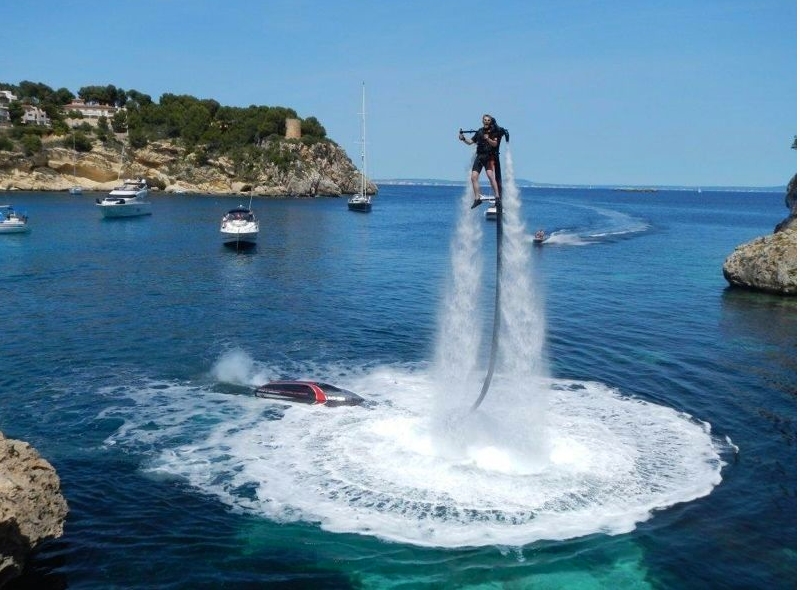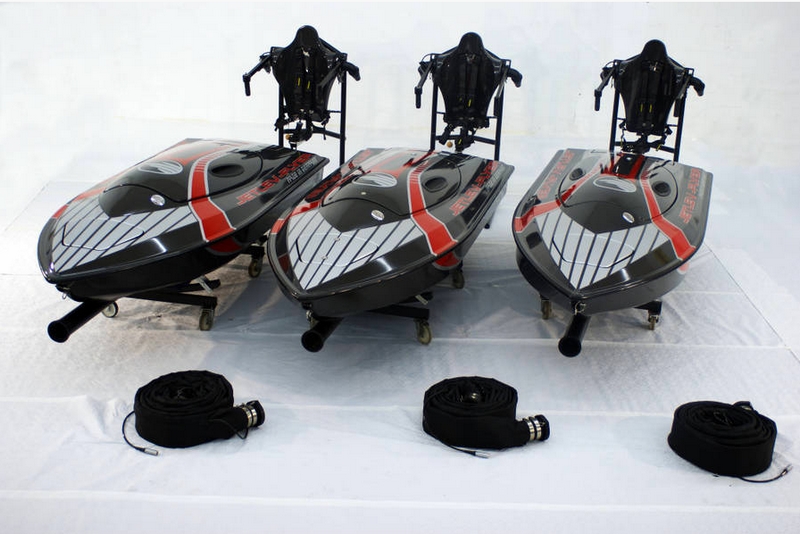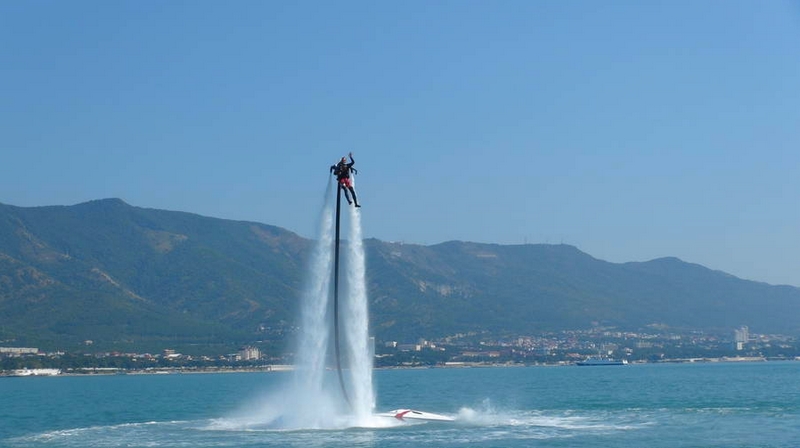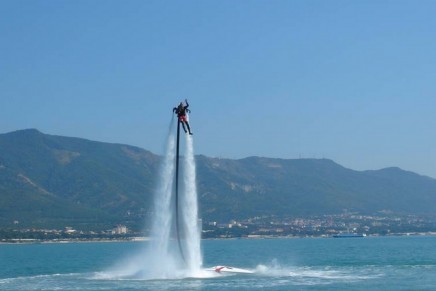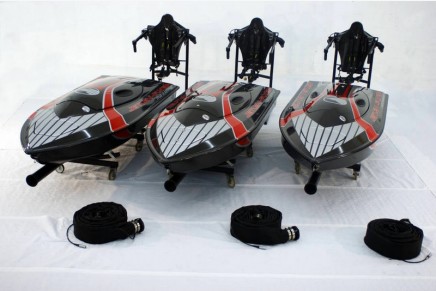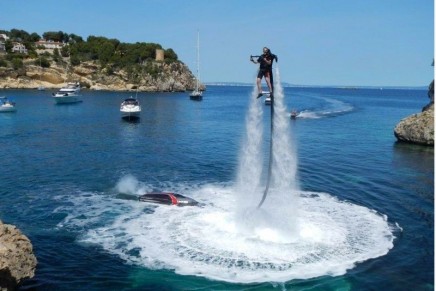Stop dreaming. Start Flying.
Carbon Sports’ top of the line model will exceed all your expectations, if you are looking for the real racing spirit. Present at this year boot 2018, the flying machine represents the ultimate in luxury, handling and performance.
Carbon Sports in Germany is the only manufacturer worldwide that produces the astonishing, complete carbon fibre made JETLEV- FLYER JF-300 (Price: EUR 99.900) with a powerful 300 HP four stroke marine engine. This exclusive device is the flagship of Carbon Sports’ product line.
“In 2014 the market is being attacked by our brilliant innovation, the JF-120 SHARK. Equipped with more features than expected from its unbeatable pricing, it will take your breath away with its fantastic performance due to little weight and small dimensions,” explained Carbon Sports.
Carbon Sports’ second model, the revolutionary JETLEV-FLYER JF-220, is powered by an efficient 220 HP four stroke marine engine and is made out of LFI, composite and fibre glass for an every day use in rough water. It provides smooth, comfortable flights as well as exciting flying thrills. JF-220 was an innovative musclecraft, equipped with a supercharged engine – the easiest access to flying thrills. The twin seat for jetpack allows the pilot to take a passenger with him. It is perfect for family, rental and training issues.
Unlike conventional aircrafts and jetpacks, the innovative concept greatly improves thrust-to-weight ratio by locating the propulsion engine, fuel system and related systems on a separate vessel tethered behind the jetpack, and uses water as the jet propulsion medium because its high density can carry vast amounts of power at much lower velocities, and generate nozzle reaction forces much more effectively thangases. The JETLEV-FLYER design and development was guided by five important principles: safety, stability, flexible hose, high power,and simplicity.
A flexible water supply hose delivers power to the jetpack with pressurized water. It also serves as the tether, enforces a flight ceiling, discourages the pilot from flying over land, acts as a stabilizer, dampens vibrations and maintains forward heading stability of the jetpack in flight.
Traditional designs of airplanes suffer from low thrust-to-weight ratios which limit their performance and agility. Even F/A-18 E/F fighter jets can barely overcome the force of gravity. To achieve a dramatic improvement in this ratio, says the builder, we decided to locate the propulsion source on a separate boat-like unit and transmit low pressure, high flow water to the jetpack through a supply hose and generate thrusts by nozzle reaction force. Even though the jetpack can generate upwards of 700 lbf (3150 N) of thrust for lift and propulsion, the flight controls are isolated from that thrust and only take a few ounces of effort to adjust.

